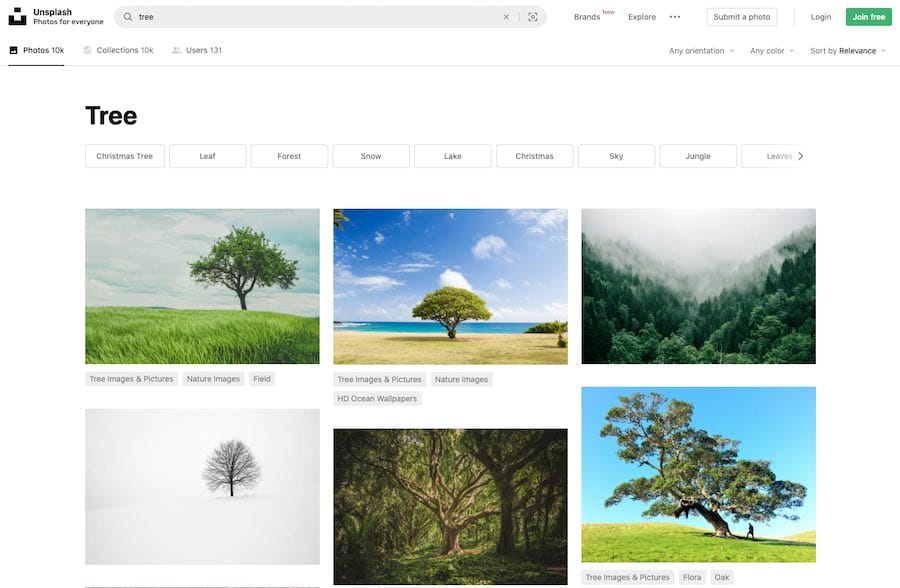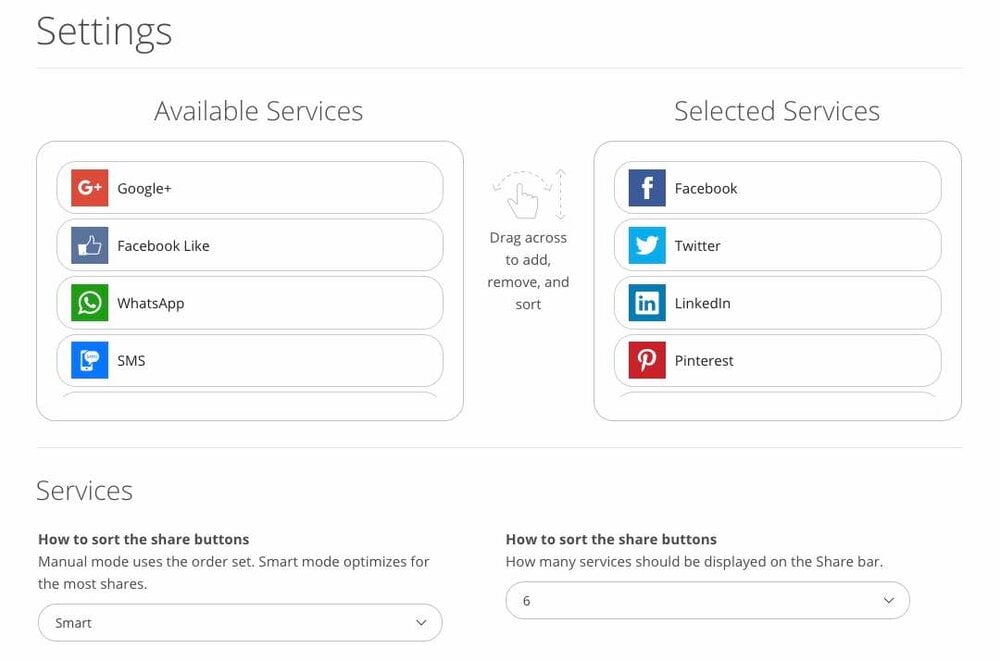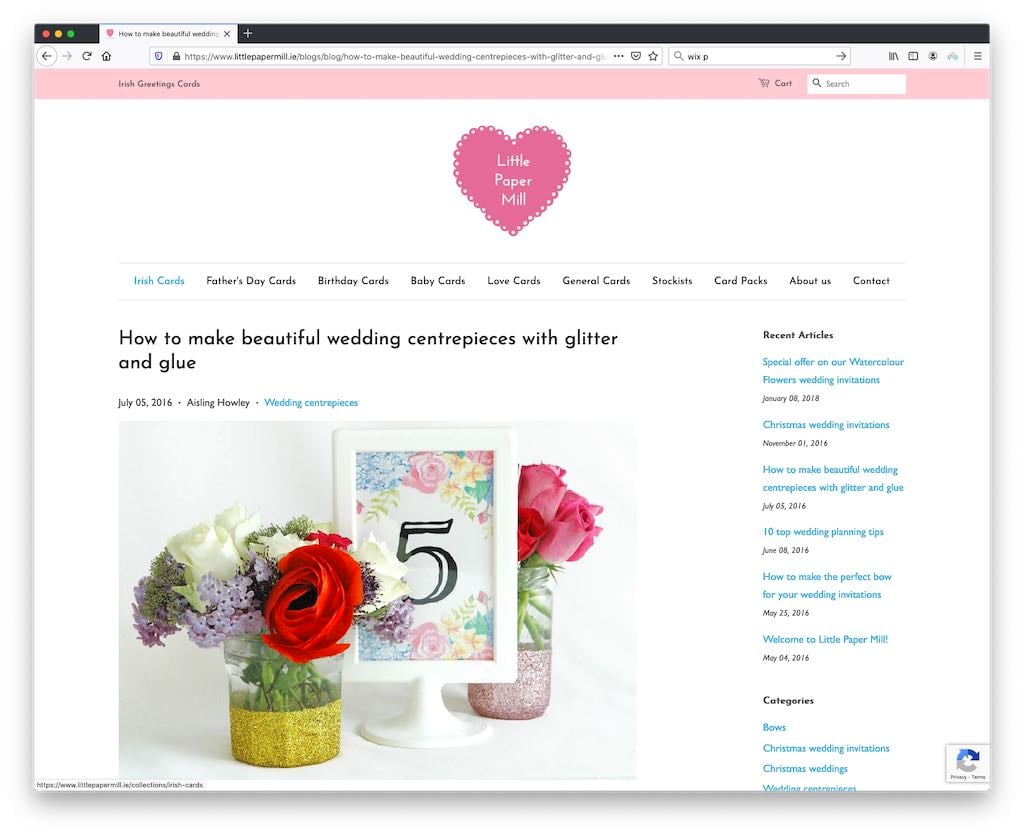How Long Does It Take A Blog To Get Traffic
We follow a strict honesty policy. However, to fund our work, we use affiliate advertising links on this blog.

In this article we look at how to increase blog traffic — below, you'll find a list of10 simple steps you can take to generate a MUCH larger readership for your posts.
Let's start with a very important question: why blog in the first place?
Why blog?

Well, there are 3 main reasons.
First, blogging can be a lot of fun. It allows you to express yourself and share your views with a potentially large audience.
Second, done well, blogging can help establish you (or your business) as an authority in your field.
And third — and most importantly — blogging has the potential to dramatically increase the number of people visiting your site. According to inbound marketing experts Hubspot, businesses that blog regularly tend to attract 55% more traffic than those that don't.
So, if you write well and are blogging about a subject in which there is a sizeable interest, you can end up with a large amount of traffic on your website.
And we all know what lots of traffic to a website means: increased sales opportunities and revenue.
But how do you go about creating a successful blog?
1. Find the right writer! (Hint: that might not be you)
At the heart of getting your blog noticed — and driving lots of traffic to it — is writing really great content.
And that content is going to be much better if the person writing it is both knowledgeable and passionate about what they are writing about.
Blog posts that are written from the heart — and not by a content farm — are far more likely to be the posts that interest people and crucially, get shared.
BUT: it might be the case that you personally are not the best person to write the posts for your site.
Perhaps you're not a great writer.
Perhaps you don't have time to devote to blogging.

If either of those statements sounds like it might apply to you, consider hiring a writer who is capable of creating truly great blog posts and putting in the hours to do so.
Whoever ends up writing the posts on your website, their personality has to shine through. Readers identify with writers because there is much to like — or even dislike — about their personality, mouthiness or tone of voice.
If a reader likes YOU as a writer — and not just the quality of the content you are producing — you are much more likely to attract a more dedicated following for your blog.
So, make sure your personality comes across in your posts. This helps you form a rapport with your readers, who may be more inclined as a result to come back to your blog simply because they like you as an individual.
2. Use keyword research to identify good topics to blog about
It's really easy to sit down and write blog posts which cover, in considerable depth, topics that nobody is remotely interested in!
Similarly, it's easy to write a blog post covering an area that people are really interested in, but to give it a title containing keywords that nobody ever searches for.
Keyword research is your friend here. You can use a wide range of keyword research tools such as Semrush or Ahrefs to discover the number of monthly searches for particular keywords — and find out how difficult it is to rank for particular search phrases.

The trick is to identify phrases that you can use in your blog that generate a reasonable amount of traffic — but for which there isn't massive competition.
Once you've done your keyword research, you should ensure that your keywords feature in all the right places in your post — its title, meta description, headers and body copy (more on all that in a moment).
3. Focus on creating long-form content for your blog

Studies show that 'long-form content' performs better in search results than short or 'thin' posts.
Long-from content refers to posts with high word counts that go into HUGE depth on a particular topic.
Now, there are a couple of reasons why long-form content helps to generate higher positions in search results.
First, longer posts will naturally be more keyword-rich — and thus more likely to crop up in results for 'long tail' keyword searches.
Second (and perhaps more importantly), the in-depth nature of a long post is more likely to satisfy readers who come across it — it will be more likely to answer your visitor's query, or solve their problem.
As a result, the post is more likely to get shared on social media or get linked to from other sites — with very positive implications for traffic.
Remember: don't overdo length!
Although long-form posts typically attract more readers than very short ones, it is important not to get too carried away with length.
If you are creating huge articles just for the sake of ticking a 'long-form' box — at the expense of producing useful content — it is unlikely that you will be rewarded by either readers or search engines for doing so.
Quality is key, as Google repeatedly makes clear in its advice on how to make content rank highly in search results.
4. Keep your blog content fresh by updating existing posts
If you do any research into blogging and SEO, you'll come across loads of articles which stress how vital it is to create 'fresh' content in order to generate good search results and traffic to your site.
However, I'd caution against interpreting this as an instruction to only produce new posts.
With my own content, I've found it much more useful to focus on quality over quantity — and rather than blogging every day just for the sake of it, I invest a lot of my time in keeping my existing content as strong (and as in-depth) as possible.
I do this by continuously reviewing older posts and enhancing them with the most up-to-date information available.
Not only does this send the 'freshness' signals to Google that the search engine's algorithms approve of, but it typically increases the length of posts and helps provide the 'long-form' content which tend to perform better in search results.
That said, there is definitely value in creating new posts periodically — the more content on your site, the more keywords you can theoretically rank for.
But again, only if the content is strong!
Download our free SEO toolkit
For a limited time we're offering our readers some excellent free SEO tools and resources. Sign up now to immediately receive:
- our downloadable cheatsheet containing the 20 key steps to ranking highly in search results
- extended free trials and discounts for leading SEO tools
- our downloadable cheatsheet on how to grow organic traffic to a blog
- 2 in-depth guides to SEO
- ongoing free tips and advice on SEO and growing your business
View privacy notice.
5. Accompany your blog with great images
It's REALLY important to use good images in any blog posts you publish.
There are four main reasons for this.
First, it helps readers get a sense of what you are writing about (this is particularly important if you are exploring difficult concepts – visual aids can really help simplify matters).
Second, the main picture accompanying your post will usually show up whenever your visitors share one of your posts on social media — and if this is a dull picture, it's much less likely to generate clickthroughs to your site.

Third, as with text, images can be optimized to help your content appear in search results. By adding suitable keywords to a picture's 'alternative text', file name and caption, you can help search engines gain a better understanding of what your post is about (and by extension, help your post appear in relevant search results).
And finally, good images help to make your content look authoritative. If you use a beautiful piece of photography instead of a cheap-looking piece of clip art to accompany a blog post, it is far more likely to be taken seriously — or read in the first place — by people who come across it.
Two important things to remember about blog post images
When adding images to your blog posts…
- Keep an eye on file size — large picture files can increase page load time, which can in turn affect how search engines treat your content in search (quick-loading pages are given priority over longer ones by search engines).
- Only use images that you have the rights to — if you don't have a license for an image, you can end up getting fined hundreds of dollars for breaching copyright (thankfully there are lots of great royalty-free stock photo sites, like Pexels and Unsplash, that can help you avoid this problem).
6. Optimize your blog posts for search engines
There are a series of technical steps — collectively known as 'on-page SEO' — that you should take to give your blog posts the best chance of performing well in search.
You should always:
-
create blog post titles which reflect your keyword research, and accurately describe what you are writing about
-
include keywords in each post's URL that reflect the content
-
use keyword-rich headings (H1, H2, H3, H4 etc.) to break up content
-
use keyword-rich alt text and file names for your images.
(For a few more tips on this area, and some more in depth information on the above, you might like to check out our post on how to make your content visible in Google search results.)
There are also a few 'technical SEO' steps you can take too. Google prefers content that loads really quickly — a few things that can help in this area include:
-
ensuring all image files are as small as possible (without being too pixelated)
-
avoiding use of unnecessary scripts on the page
-
using a CSS stylesheet rather than adding loads of inline CSS
to your pages -
registering your site with Google Search Console
Important: optimize your blog posts for 'real' readers too!
It's easy to focus on all the things you can do to make a search algorithm like your blog posts — and totally forget that it's actually humans that you're trying to impress!
There are a few things you can do to make your blog post more appealing to 'real' readers:
- Avoid jargon or complex language — a large proportion of the the people reading your blog posts will be entirely new to the topic you're discussing, so use plain language where possible and explain concepts clearly.
- Use relatively large, easy-to-read fonts on your blog.
- Ensure your blog uses a 'responsive' design — i.e., one that displays your content appropriately for the device it's being viewed on (mobile, tablet, laptop etc.).
- Make sure your blog loads fast — a slow-loading post put people off reading it.
7. Capture email addresses
Once you've attracted visitors to your blog, you should always do your best to capture their email addresses.
This allows you to notify visitors via e-newsletter about new blog posts, which can result in significantly more traffic and social shares.
To capture email addresses effectively, you need to ensure that there is a mailing list sign-up form on each blog post — not just on a 'sign up to our mailing list' page on your site. You can do this using a sidebar, pop-up box or a simple text call-to-action to encourage people to join your mailing list.*
When creating this sign-up form, remember to spell out the benefits of joining the list — the value that your a site visitor will get out of becoming a subscriber.
For example, rather than using a boring 'join our mailing list' call to action, highlight the sort of resources a subscriber can expect to receive, the skills they'll learn etc.

If you use an email marketing tool (like GetResponse, AWeber, Mailchimp or Mad Mimi) you can use your RSS feed to power your e-newsletters — meaning that every time you add a new blog post your subscribers will automatically receive an e-newsletter with a notification about the new content.
* Be careful with pop-ups (or 'interstitials' as Google likes to call them). They can dramatically increase the number of leads you generate, but they can also have a negative impact on search traffic, particularly if over-used on mobile versions of your site. Learn more about Google's approach to pop-ups here.

Actively encourage your readers to share your blog posts — be explicit with your requests for people to post your content on Twitter, Facebook and other social networks.
If they follow these encouragements, not only should you see a rise in traffic to your posts, but you may also be sending subtle 'signals' to search engines regarding the popularity and quality of your posts (the jury is out on whether social sharing has a direct impact on search results, but there does seem to be a correlation of sorts).
Using a tool like Sumo or Addthis – which allow you to add a lot of clever social sharing icons to various parts of your website, as well as data capture forms — can help in this regard.

Does the blogging platform matter?
A lot of people wonder if blogging is best done on a particular platform.
Well, there is absolutely nothing to stop you running a successful blog on popular website / online store builders like Shopify, Squarespace, BigCommerce or Wix— and following the tips in this post can help you increase traffic to (and sales from) sites built on those platforms.

However, if you want to create a full-blown publication, or blog professionally, then there's a lot to be said for using self-hosted WordPress.
WordPress started life as a blogging tool and provides a host of blogging features that you won't typically find on hosted website building solutions (for example, content versioning, SEO tools and advanced categorization options).
Encourage people to add their own views at the bottom of your posts. There are three reasons why this is beneficial:
-
It creates more keyword-rich content on your website
(content that can be indexed, and ranked highly, by Google). -
It can help encourage return visits to your blog, as discussions take hold in your comments section
. -
Some SEO experts believe that Google treats blog posts which generate a lot of community discussion preferentially to those without any comments — possibly because it increases 'dwell time' on the post.
10. Build quality backlinks to your posts
At the very simplest level, there are two key ingredients to ensuring a blog post ranks in search:
First, your post has to contain quality content.
Second, it has to have a lot of backlinks — links from other sites — pointing to it.
We've covered the 'quality content' bit earlier — you need to focus on producing long-form posts which cover the topic you're writing about clearly, and in considerable depth. Always aim to satisfy a reader's query; to solve their problem.
Getting backlinks is often a much harder task, as it involves reaching out to other bloggers / website owners, and asking them to include a link to your content on their posts — it's like an online PR campaign of sorts.
This sort of outreach is a time consuming affair, but it's important, and if you take a thorough approach to it, it can prove very fruitful.
Another option with regard to backlink generation is to hire an agency to do this on your behalf — but you have to be careful here, as hiring an agency or consultant who then goes onto place (or worse, buy) links on low-quality sites can actually do more harm than good.
When building links,
-
focus on websites that have a good reputation (you can use the 'domain authority scores' provided by SEO tools like Ahrefs or Semrush to find out which ones do or don't).
-
always ensure that the links you're building make sense in context (for example, if you're building a link to a site about shoes, don't build links on posts about ice cream).
You'll find a really helpful list of link building suggestions over on the Backlinko website. Or sign up to our mailing list using the form below to get our latest SEO tips.
Download our free SEO toolkit
For a limited time we're offering our readers some excellent free SEO tools and resources. Sign up now to immediately receive:
- our downloadable cheatsheet containing the 20 key steps to ranking highly in search results
- extended free trials and discounts for leading SEO tools
- our downloadable cheatsheet on how to grow organic traffic to a blog
- 2 in-depth guides to SEO
- ongoing free tips and advice on SEO and growing your business
View privacy notice.
Blogging FAQ
What's the best blogging platform?
Most modern website builders and ecommerce solutions come with perfectly good blogging tools. However, if your aim is to start blogging professionally, or create a magazine-style publication, self-hosted WordPress is usually a good option.
How do I make money from blogging?
The main ways to generate income from a blog usually involve either affiliate advertising (where you get a commission if one of your readers clicks a link on your page and then buys a product from the website they arrive at) or display advertising (where you show banner adverts on your site, for example Google Adsense ads). Another way to generate income is to build a mailing list via signups on your blog, and sell products to the subscribers on it.
Can I blog for free?
You can blog for free on quite a few platforms — Blogger is probably the best known one. Some paid-for platforms like Wix and WordPress also let you blog for free, with ads displayed alongside your content.
Any questions on how to increase blog traffic?
We hope you've enjoyed our tips on how to increase blog traffic! If you have any questions about the topic, we'd love to hear them — just leave your query in the comments below (we read all comments and try to respond to all of them).
And if you enjoyed this post, do feel free to share it, either on social media or by creating a link to it on your own website or blog 🙂
How Long Does It Take A Blog To Get Traffic
Source: https://www.stylefactoryproductions.com/blog/ways-to-increase-traffic-to-your-blog
Posted by: jonesmucconothave.blogspot.com

0 Response to "How Long Does It Take A Blog To Get Traffic"
Post a Comment